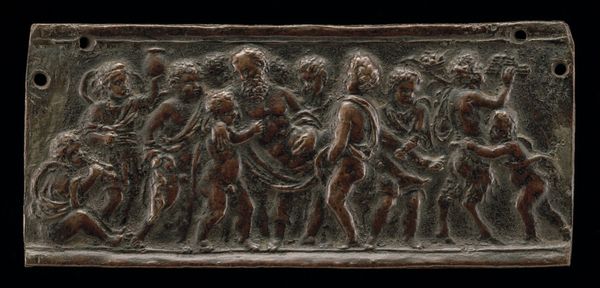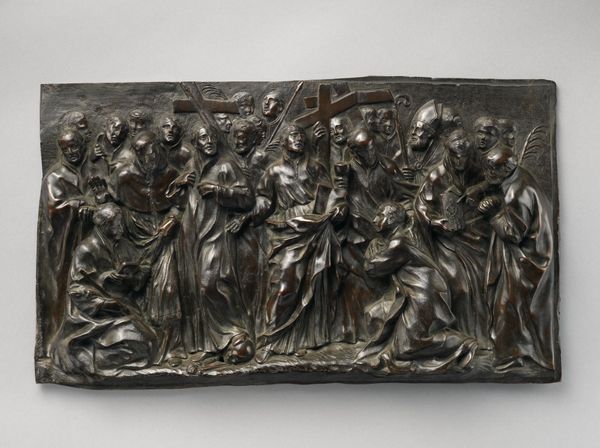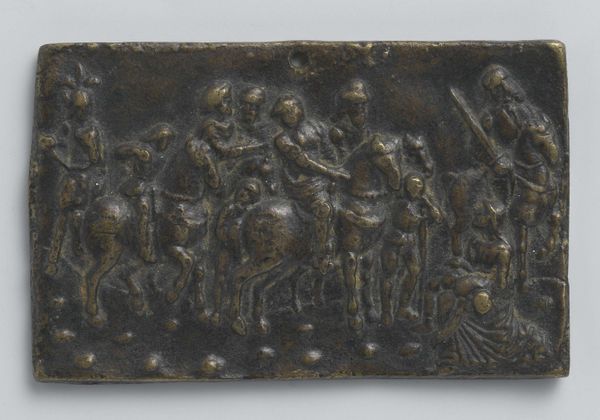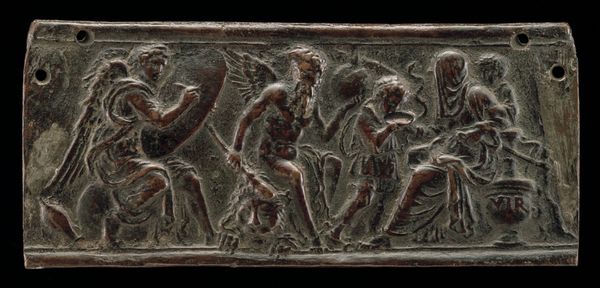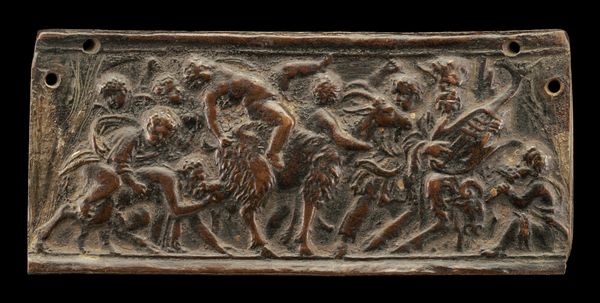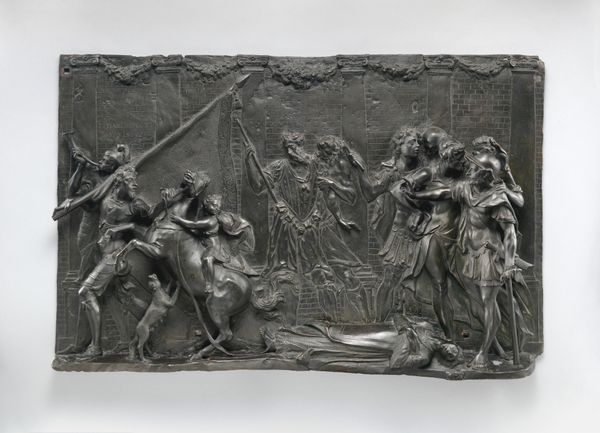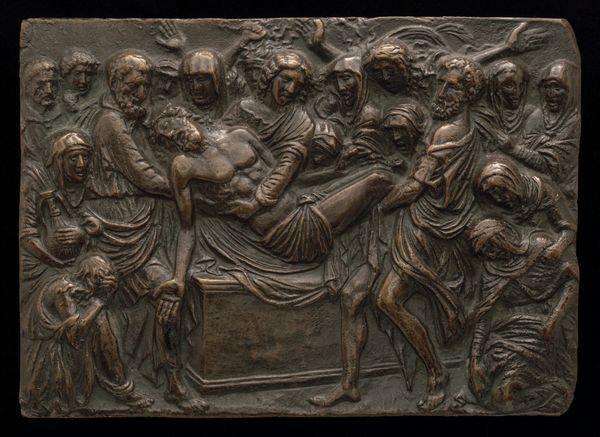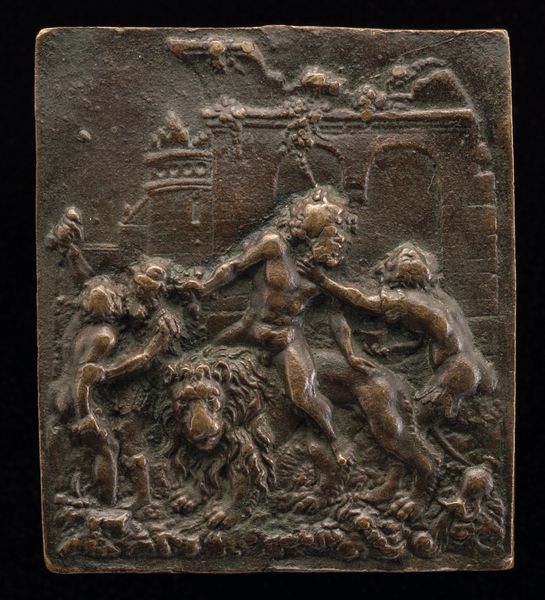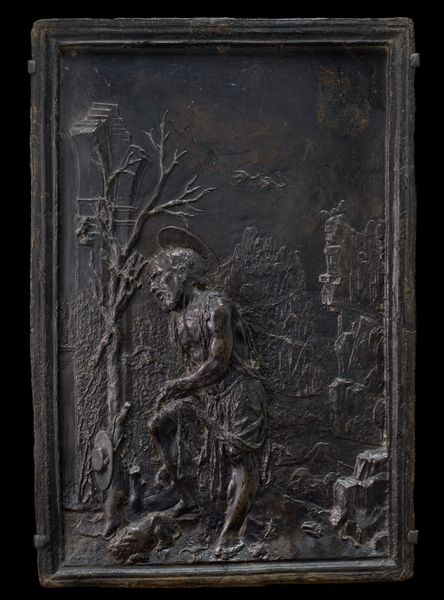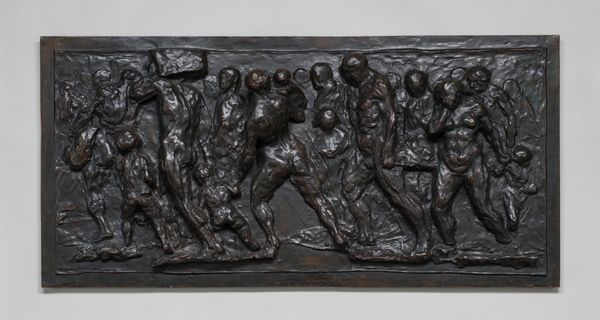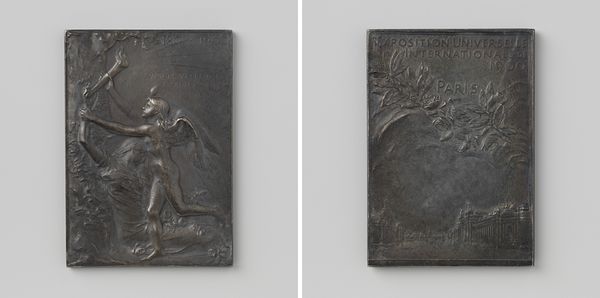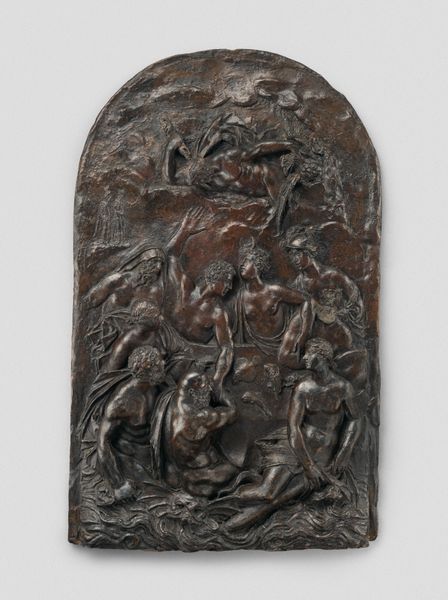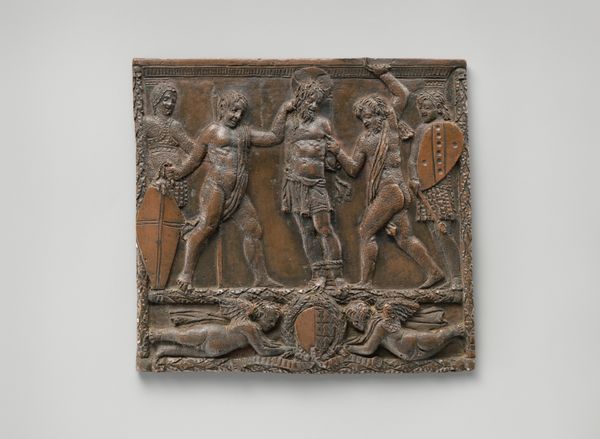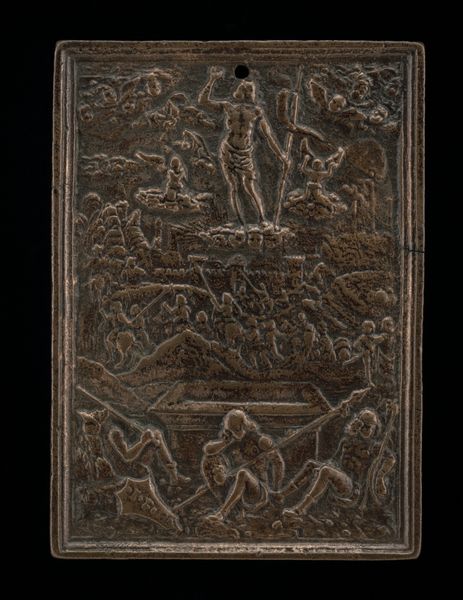
relief, bronze, sculpture
#
impressionism
#
sculpture
#
textured
#
relief
#
landscape
#
bronze
#
figuration
#
sculpture
#
history-painting
#
academic-art
Dimensions: overall: 29.21 × 60.33 × 6.35 cm (11 1/2 × 23 3/4 × 2 1/2 in.)
Copyright: National Gallery of Art: CC0 1.0
Editor: Here we have Thomas Eakins’s bronze relief sculpture, possibly titled "Arcadia", and thought to be from 1883. I’m immediately drawn to the textured surface and the way the figures seem to emerge from the background. How do you interpret this work in its historical context? Curator: “Arcadia” speaks to a powerful current within late 19th-century American art: the desire to connect with classical traditions while also establishing a uniquely American identity. Eakins, like many artists of his time, was deeply influenced by the academic art system. It emphasized the importance of historical subjects, mythological narratives, and the idealization of the human form. Editor: So, “Arcadia” wasn’t just a decorative piece then? Curator: Exactly. Eakins seems to be placing these figures in a mythical Golden Age, a return to nature, free from modern society's problems. But consider the societal role of academic art. It served as a means to promote cultural values and legitimize existing power structures. By referencing Arcadia, Eakins perhaps tapped into this nostalgia for an imagined past. The choice of bronze as a medium, with its associations with permanence and monumentality, also elevates the subject matter, imbuing it with historical weight. Do you think the choice to depict nudes plays into this dynamic at all? Editor: I see your point. I guess that the nudity definitely relates to academic and classical art, but it may have other purposes as well. Curator: And by placing nude figures in this “natural” environment, what cultural narratives does Eakins reinforce or challenge, and what values are associated with this "natural" state? What are your closing thoughts? Editor: Well, I see "Arcadia" now as more than just an idyllic scene. It’s a reflection of the cultural values and historical influences that shaped art, artists, and its viewers in that period. Curator: Indeed. And questioning those influences and power dynamics is part of the ongoing dialogue about art's role in our culture.
Comments
No comments
Be the first to comment and join the conversation on the ultimate creative platform.
